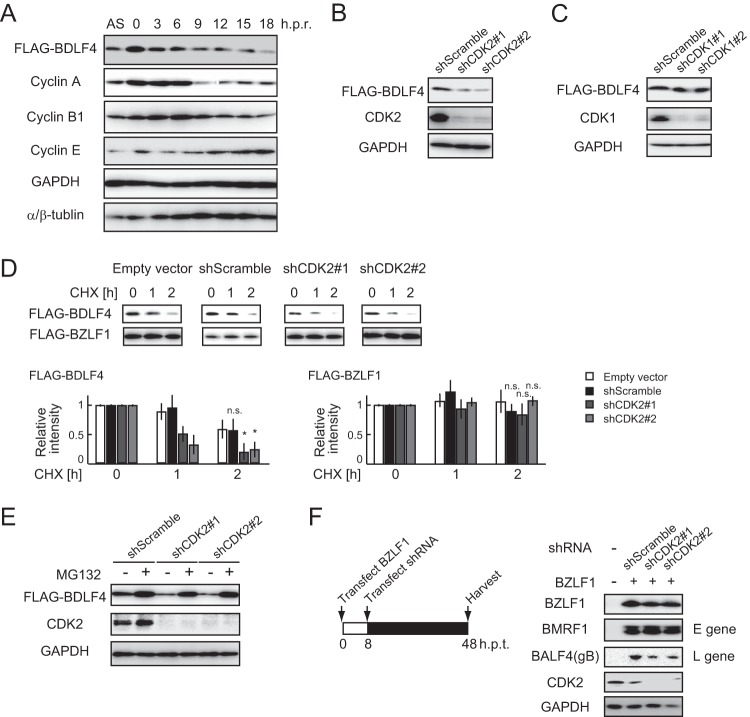FIG 5.
CDK2 is responsible for the phosphorylation-mediated stabilization of BDLF4. (A) The cell cycle of HEK293/FLAG-BDLF4 cells was synchronized using a double thymidine block (61). Cells were harvested at the indicated times after release of the block and were analyzed by immunoblotting using the indicated antibodies. AS, asynchronized; h.p.r., hours postrelease. (B and C) HEK293/FLAG-BDLF4 cells were transfected with plasmids expressing shRNA targeting CDK1 or CDK2 mRNA. Cells were lysed at 48 h p.t. for immunoblotting using the indicated antibodies. (D) HEK293/FLAG-BDLF4 cells were transfected with FLAG-BZLF1 and/or shRNA expression plasmids as indicated, followed by CHX treatment (50 mg/ml). The protein levels of FLAG-BDLF4 and FLAG-BZLF1 (control) were detected using anti-FLAG antibodies. Results are presented as means ± SDs from three independent experiments and are shown relative to the protein levels in the absence of CHX treatment. Asterisks, P < 0.05; n.s., not significant. (E) HEK293/FLAG-BDLF4 cells transfected with shCDK2 were treated with MG132 for 24 h before harvesting. Lysates were analyzed by immunoblotting using the indicated antibodies. (F) (Left) Lytic replication was induced by transfection of 293/EBV(WT) cells with a BZLF1-expressing plasmid, followed by transfection with plasmids carrying shCDK2 at 8 h p.t.; the cells were harvested at 48 h p.t. (Right) Lysates were subjected to immunoblotting using the indicated antibodies.

